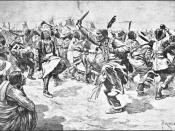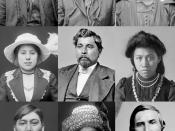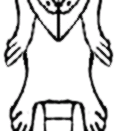Bedoya, Laura
Pd.6
2/4/14
White Americans and Native Americans have been bumping heads since the first white man set foot on Native land. Even today, the argument continues. A topic that sparks controversy among these two very different cultures is education. Educating Sons and The First Americans are two pieces by Native Americans that argue their views on education. The speech Educating Sons by Chief Canasatego talks about the differences between a Native American's education and a white man's education while declining an offer for his men to be educated in Virginia. The First Americans is a letter written by The Grand Council Fire of American Indians to the mayor of Chicago asking for Native Americans to be portrayed fairly to young students. In my opinion, the Council's letter is better suited for serving its purpose.
As proven in Educating Sons and The First Americans, rhetorical devices are an important part of getting a reader to consider a topic from a different perspective.
But one of the pieces does a distinctly better job at putting them to good use. In my opinion, The First Americans uses rhetorical devices better than Educating Sons. When Chief Canasatego writes, "To show our good sense of it, if the gentlemen of Virginia will send us a dozen of their sons, we would take great care in their education, instruct them in all we know and make men of them.", he makes a good use of irony, but the Council's rhetorical questions are superior to the Chief's sarcasm. When the council says, "If the Custer battle was a massacre, what was Wounded Knee?", it brings out the fact that the battle with Custer was considered a massacre in history books because white Americans were killed, but when Native Americans were slaughtered in Wounded Knee,


